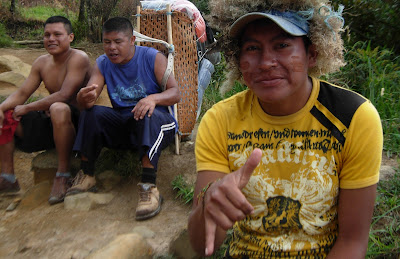You don't meet an authentic Piaroa Shaman every day. Joaquin Marquez and his son Alfredo came to Mérida all the way from Sabanito de Pintao in Amazonas State to take part in the International Tourism Fair, FITVen2013.
It's hard to imagine the attraction of a tourism fair to an indigenous leader who has spent years trying to preserve the cultural traditions of his people, but Joaquin says he understands the need to integrate into mainstream society, albeit on his terms.
There are about 15,000 Piaroa (Wotuja in their own language) living in the Orinoco-Ventuari region of Venezuela's Amazonas and Bolivar states. Their most sacred monument is the dramatic, tabletop mountain known in Spanish as Cerro Autana, a popular destination for adventure tourists.
For the Piaroa, the Autana is the stump of a giant tree of life that once held all the fruits of the forest. When it was felled a giant flood engulfed the land, creating the world of the Piaroa but connecting them forever to the mythic pre-flood world.
While the majority of Piaroa now wear western clothing and are increasingly part of the cash economy they still hold on to traditional beliefs and customs.
Joaquin and Alfredo are keen to encourage more tourists to visit the village of 62 people that Joaquin founded as a young man.
They want the people of Sabanita de Pintao to benefit from the money they make by selling the beaded knecklaces, carved maracas, shamans stools, woven baskets and dance masks that form part of their culture.

Just 25 minutes by car from Puerto Ayacucho, the capital of Amazonas State, Sabanita de Pintao is on the road to a famous petroglyph carved into a high rock wall known locally as the Piedra Pintada.
Many people who visit the indigenous market in Puerto Ayacucho are struck by the dramatic masks and bark cloth costumes made by the Piaroa, which represent mythical creatures such as the monkey and the peccary, and are used in ritual dances.
If you want to visit an indigenous group that are proud to wear their white cotton guayucos (loincloths) and show you their heritage, then Sabanita de Pintao is a good place to start.
Follow my FITVen2013 trip on Instagram by clicking here:
Check out a video clip of Piaroa kids snacking on Tarantulas:
A Piaroa Creation Myth: Buoka and Wajari, the first men











